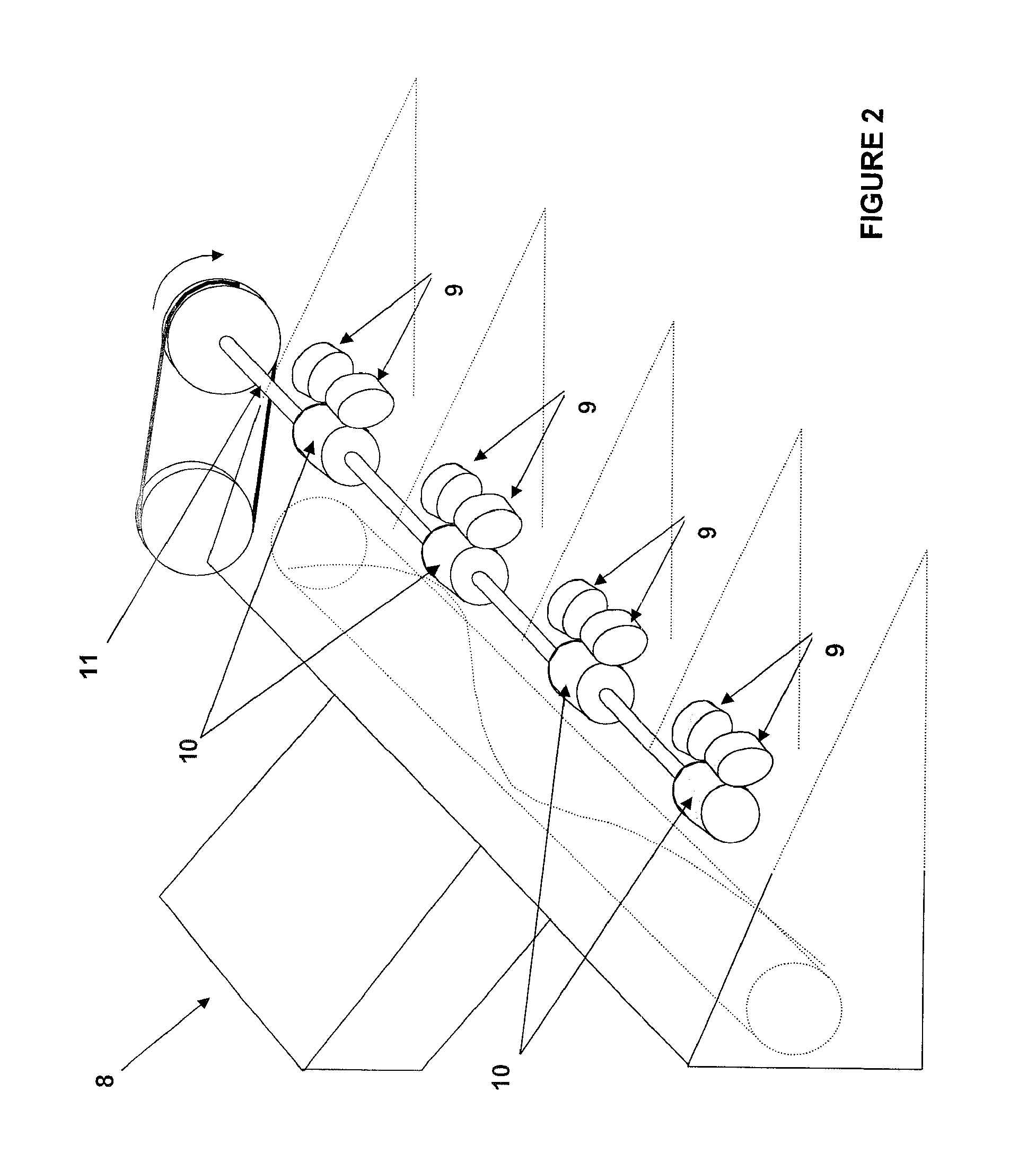This study informs that if there is an excessive
ground speed, the corn header will pull the ears off the stalk in the rear part of the stripper plates, piling up several ears at the same time and causing some to fall in front of the header and others to suffer loss of seeds.
If these two factors are uniform in the crop, the header adjustment is simple, but if any of these two factors are not uniform in the row, the stripper plates adjustment will not be a simple matter to solve.
The whole kit has a high cost and a considerable weight, which, in headers with large amounts of rows, causes problems at the
structural level and stability of the
combine harvester.
Synchrony failures can produce contact between rolls, breakage, premature wear, stalk cuts and jamming, among others.
The issues related to the conic ends are associated with the operational area and the building area, the latter has to do, first with the fact that when the roll is not a single-piece cast, the conic ends with the
helical flightings are pieces separated from the roll body, that must be cast or forged and then assembled to the roll body by
welding or threading.
The operational area presents many issues.
If the
helical flighting is too high, it does not allow an adequate incoming of the stalk by “pushing it”, this also takes places if the passage is narrow or if the
helical flightings of one roll are not properly out-of-phase from the helical flightings of its adjacent roll, which may cause them to come into contact or close enough to cause stalk
cut or incoming difficulty.
The former must have little aggressive traction surfaces with rounded edges or teeth so that they do not “bite” or hurt the ear causing seed loss making them prone to wearing, which, when it takes place, considerably decreases the traction effect, and thus the ears do not separate appropriately from the stalk being then beaten by the gathering chains and thus producing seed loss and stalk breakage that is sent to the inside of the combine harvester.
For this reason, in order to assure traction, the aggressiveness of the rolls is increased using mainly high-wing intercrossed drivers, which makes them less prone to wearing but does not allow contact between the ear and the rolls surface since it would probably mutilate it instead of separating them, pulling it downwards.
This may be problematic due to different stalks and ear sizes, which forces to constant adjustment of the stripper plate edges distance since when they are too far apart, they would not have a good grip of the ears and can this to pass through, and when too tight, the stalks would get stuck with consequences over the pushing of the plants (stalk cuts and breakage).
This hinders the performance of gathering chains and row divider points to enter the plants into the
system, producing a shearing effect between the gathering chains and the plants thus causing ear loss due to their downfall or to greater amount of material to be processed by the combine harvester.
In the lateral rolls
system there is a
blind spot at the rear end where the material that has not been pulled by these may
pile up, causing jamming, which must be withdrawn manually resulting in a loss of time.
The lateral rolls
system operate in a synchronized manner, a loss of synchrony would cause contact of the flutes or drivers edges or helical flightings, causing serious damage to the system thereby requiring adjustments in precision and 90° gearboxes for its correct operation.
In a pair of lateral rolls, the rotation between rolls is opposite, this implies that the helical flightings must be left-hand helical flightings and right-hand helical flightings and also the rolls must be left-hand rolls and right-hand rolls, thereby increasing the cost of manufacturing and spare parts.
 Login to View More
Login to View More  Login to View More
Login to View More 


